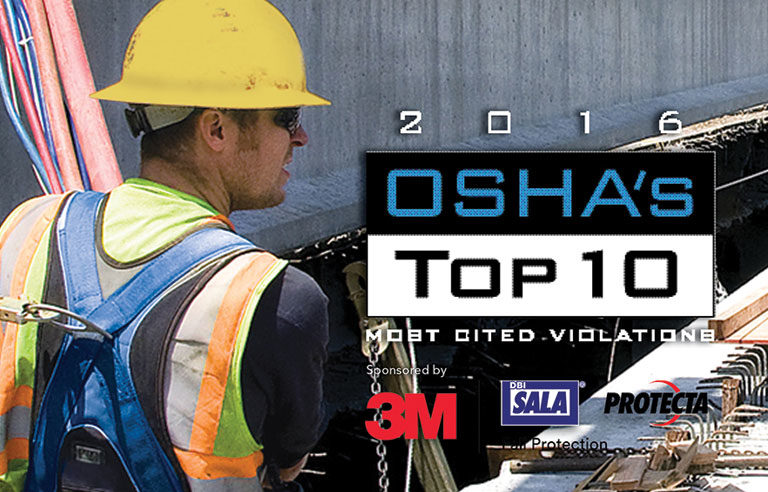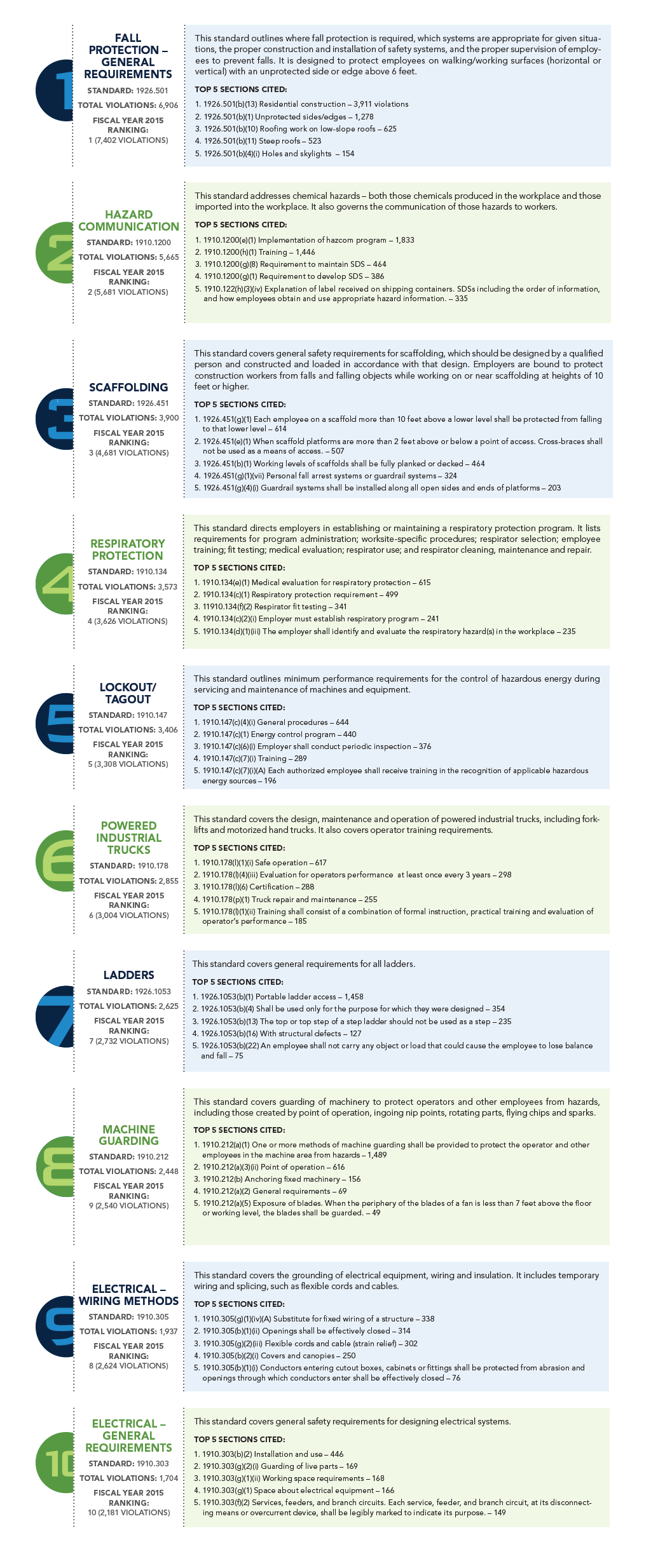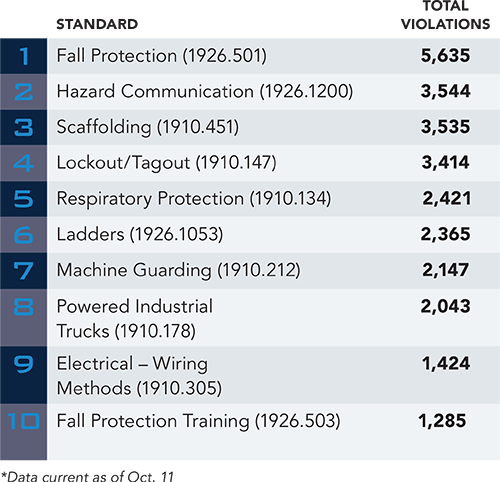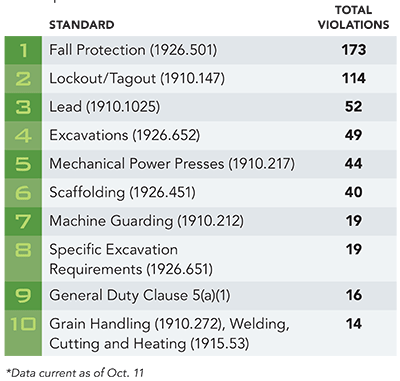OSHA’s Top 10 Most Cited Violations for 2016


Intro and Top 10 listing | Penalty Box
Q&A with OSHA's Patrick Kapust | Infographic | Citation Solutions
Although the rankings for OSHA’s Top 10 most cited violations change little from year to year, the agency provides dozens of statistics. Glance too quickly at the numbers for fiscal year 2016, and you might experience a sense of information overload.
Get the latest figures
2017 data was released since this list was published. Read the newest article.
A simple approach is best, said Patrick Kapust, deputy director of OSHA’s Directorate of Enforcement Programs. He presented the agency’s Top 10 list of most frequently cited violations for the past fiscal year in October during the 2016 National Safety Council Congress & Expo in Anaheim, CA. “Take the list,” Kapust said, “and look at your own workplace off of that list. ‘These are the things OSHA is finding. Would they find these at my workplace?’ It’s a good place to start.”
As for OSHA’s Top 10 list, it starts with Fall Protection (1926.501) as the most cited violation for the sixth straight year. Hazard Communication (1910.1200) and Scaffolding (1926.451) complete the top three most-cited categories, all unchanged from FY 2015.
Rounding out the top five most cited violations are Respiratory Protection (1910.134) and Lockout/Tagout (1910.147).
OSHA issued a total of more than 35,000 citations in its Top 10 categories during fiscal 2016, which ended Sept. 30.
OSHA’s Top 10 for FY 2016 begins below.
Most-cited violations, fiscal year 2016
Data current as of Oct. 11, 2016

See other favorite Safety+Health articles in 2016.
Top 10 "serious" violations, fiscal year 2016

Top 10 "willful" violations, fiscal year 2016

Post a comment to this article
Safety+Health welcomes comments that promote respectful dialogue. Please stay on topic. Comments that contain personal attacks, profanity or abusive language – or those aggressively promoting products or services – will be removed. We reserve the right to determine which comments violate our comment policy. (Anonymous comments are welcome; merely skip the “name” field in the comment box. An email address is required but will not be included with your comment.)


